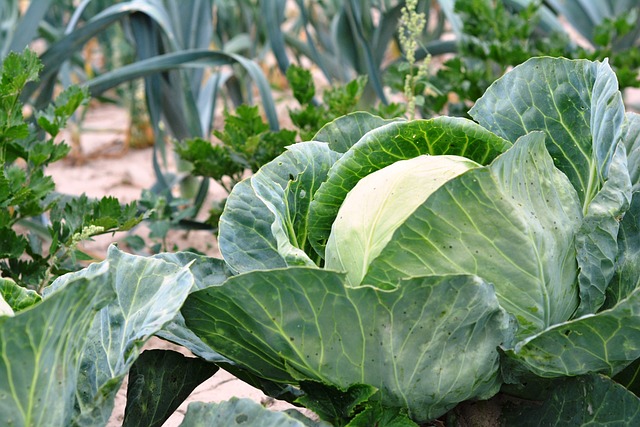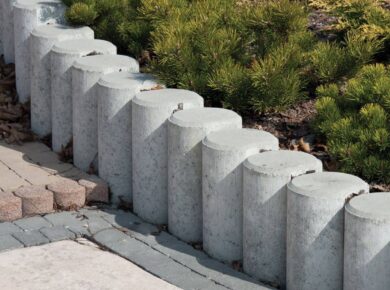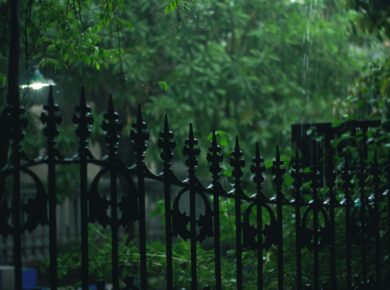The Habitat and Adaptations of Polar Bears
Polar Bear Hortensja
Polar bears are fascinating creatures that have adapted to survive in one of the harshest environments on Earth – the Arctic. Their habitat and adaptations are truly remarkable, allowing them to thrive in a world of ice and snow. In this article, we will explore the habitat of polar bears and the unique adaptations that enable them to survive in such extreme conditions.
The Arctic is a vast, frozen wilderness that stretches across the northernmost regions of the planet. It is here that polar bears make their home, relying on the ice-covered waters of the Arctic Ocean for their survival. These bears are highly specialized for life in this icy habitat, with adaptations that set them apart from other bear species.
One of the most obvious adaptations of polar bears is their thick layer of blubber. This layer of fat provides insulation and helps them retain body heat in the freezing temperatures of the Arctic. Additionally, their fur is uniquely designed to keep them warm. It is dense and water-repellent, allowing them to shake off excess moisture and prevent their skin from getting wet.
Another remarkable adaptation of polar bears is their large, powerful paws. These paws are not only excellent for swimming, but they also act as snowshoes, distributing the bear’s weight over a larger surface area and preventing them from sinking into the snow. This adaptation is crucial for their hunting success, as they rely on stealth and surprise to catch their prey.
Speaking of prey, polar bears are primarily carnivorous, with their diet consisting mainly of seals. They are skilled hunters, patiently waiting for seals to surface through breathing holes in the ice before launching a surprise attack. Their sharp teeth and powerful jaws allow them to make quick work of their prey, ensuring they get the necessary nutrients to survive in their harsh environment.
In addition to their physical adaptations, polar bears also possess unique physiological traits that enable them to survive in the Arctic. For example, they have the ability to slow down their metabolism and reduce their energy expenditure during periods of food scarcity. This allows them to survive for extended periods without eating, which is crucial during the long, harsh winters of the Arctic.
Unfortunately, the habitat of polar bears is under threat due to climate change. As the Arctic ice melts at an alarming rate, polar bears are losing their hunting grounds and are forced to travel longer distances in search of food. This puts a tremendous strain on their already vulnerable population, making conservation efforts all the more important.
In conclusion, the habitat and adaptations of polar bears are truly remarkable. These magnificent creatures have evolved to thrive in the icy wilderness of the Arctic, with adaptations that allow them to withstand freezing temperatures, swim in icy waters, and hunt for their prey. However, their survival is now threatened by climate change, highlighting the urgent need for conservation efforts to protect these iconic animals and their fragile habitat.
The Threats to Polar Bear Populations
Polar Bear Hortensja
The Threats to Polar Bear Populations
Polar bears, the majestic creatures of the Arctic, are facing numerous threats to their populations. These threats are not only endangering the survival of these magnificent animals but also disrupting the delicate balance of the Arctic ecosystem. In this article, we will explore some of the major threats that polar bears are currently facing.
One of the most significant threats to polar bear populations is climate change. The Arctic is warming at an alarming rate, causing the sea ice to melt earlier in the spring and freeze later in the fall. This reduction in sea ice limits the polar bears’ ability to hunt for seals, their primary source of food. As a result, polar bears are becoming malnourished and their survival rates are decreasing.
Another threat to polar bears is the loss of habitat. With the melting of the sea ice, polar bears are losing their traditional hunting grounds and breeding areas. They rely on the sea ice as a platform for hunting and as a place to give birth and raise their cubs. Without sufficient sea ice, polar bears are forced to travel longer distances in search of food, which can be exhausting and dangerous for them.
Human activities also pose a significant threat to polar bear populations. Oil and gas exploration in the Arctic has the potential to disrupt polar bear habitats and increase the risk of oil spills. Pollution from industrial activities can contaminate the bears’ food sources and lead to health problems. Additionally, increased shipping in the Arctic can result in collisions between ships and polar bears, causing injuries or fatalities.
Furthermore, overhunting has had a detrimental impact on polar bear populations in the past. Although hunting is now regulated and strictly controlled, illegal hunting still occurs in some areas. This illegal hunting, combined with the other threats mentioned, puts additional pressure on polar bear populations that are already struggling to survive.
Efforts are being made to protect polar bears and their habitats. International agreements, such as the Polar Bear Agreement and the Convention on International Trade in Endangered Species of Wild Fauna and Flora (CITES), aim to regulate hunting and trade of polar bears and their parts. Conservation organizations are also working to raise awareness about the importance of protecting polar bears and their habitats.
In conclusion, polar bears are facing numerous threats to their populations. Climate change, loss of habitat, human activities, and overhunting are all contributing to the decline of these magnificent creatures. It is crucial that we take immediate action to mitigate these threats and ensure the survival of polar bears for future generations. By addressing climate change, protecting their habitats, and enforcing regulations against illegal hunting and pollution, we can help secure a brighter future for polar bears and the Arctic ecosystem as a whole.
Conservation Efforts for Polar Bears
Polar Bear Hortensja
Polar bears are majestic creatures that have captured the hearts of people all over the world. With their thick white fur and powerful presence, they are a symbol of the Arctic and its fragile ecosystem. However, these magnificent animals are facing numerous threats to their survival, including climate change and habitat loss. In response to these challenges, conservation efforts for polar bears have been implemented to protect and preserve their populations.
One of the key conservation efforts for polar bears is the establishment of protected areas. These areas serve as sanctuaries for the bears, providing them with a safe habitat where they can hunt, breed, and raise their young without disturbance. Protected areas also help to limit human activities that may disrupt the bears’ natural behavior, such as oil and gas exploration or tourism. By designating these areas as off-limits to human interference, we can ensure that polar bears have a fighting chance at survival.
Another important aspect of conservation efforts for polar bears is research and monitoring. Scientists and researchers study the behavior, population dynamics, and health of polar bears to better understand their needs and develop effective conservation strategies. This research helps to identify the key threats facing polar bears and provides valuable data for policymakers and conservation organizations. By monitoring the population size and health of polar bears, we can assess the success of conservation efforts and make necessary adjustments to ensure their long-term survival.
Climate change is perhaps the greatest threat to polar bears, as it is causing the rapid loss of sea ice, which is essential for their hunting and breeding. To address this issue, conservation efforts are focused on reducing greenhouse gas emissions and promoting sustainable practices. By advocating for renewable energy sources and encouraging individuals and industries to reduce their carbon footprint, we can help slow down the rate of climate change and protect the polar bears’ habitat.
Education and awareness are also crucial components of conservation efforts for polar bears. By raising public awareness about the challenges facing polar bears, we can inspire individuals to take action and support conservation initiatives. Educational programs in schools and communities can teach people about the importance of polar bears in the Arctic ecosystem and the need to protect their habitat. By fostering a sense of responsibility and empathy towards these magnificent creatures, we can create a collective effort to ensure their survival.
In conclusion, conservation efforts for polar bears are essential to protect these iconic creatures from the threats they face. By establishing protected areas, conducting research and monitoring, addressing climate change, and raising awareness, we can work towards preserving the polar bears’ habitat and securing their future. It is our responsibility to take action and ensure that future generations can continue to admire the beauty and strength of polar bears in the wild. Together, we can make a difference and contribute to the conservation of these magnificent animals.
The Life Cycle and Reproduction of Polar Bears
Polar Bear Hortensja
Polar bears are fascinating creatures that inhabit the icy regions of the Arctic. These majestic animals have a unique life cycle and reproduction process that is worth exploring. In this article, we will delve into the world of polar bears and uncover the secrets of their life cycle.
The life cycle of a polar bear begins with the birth of a cub. Female polar bears, known as sows, typically give birth to one to three cubs at a time. The cubs are born in a den, which is usually a snowdrift or a cave dug into the snow. The den provides warmth and protection for the vulnerable cubs during their early days.
After spending several months in the den, the cubs emerge and start their journey of growth and development. They rely on their mother’s milk for nourishment and gradually learn to walk and swim. The mother bear plays a crucial role in teaching her cubs essential survival skills, such as hunting and navigating the Arctic terrain.
As the cubs grow older, they become more independent and start venturing out on their own. This is a critical phase in their life cycle, as they need to learn how to hunt and fend for themselves. The young bears observe and imitate their mother’s hunting techniques, gradually honing their skills.
Once the cubs reach sexual maturity, which is usually around the age of four to five years, they are ready to reproduce. Male polar bears, known as boars, compete for the attention of the females during the breeding season. This competition often involves displays of strength and dominance, such as wrestling matches.
Once a male polar bear successfully mates with a female, the fertilized eggs undergo a unique process called delayed implantation. This means that the fertilized eggs do not immediately attach to the uterine wall. Instead, they remain in a state of suspended development until conditions are favorable for the sow to give birth.
After a gestation period of approximately eight months, the sow enters a den to give birth to her cubs. This den is different from the one used for hibernation, as it provides a safe and warm environment for the birth. The sow typically gives birth to two cubs, although single or triplets are also possible.
The cubs are born blind and helpless, weighing only about one kilogram. They rely entirely on their mother for nourishment and protection during their early days. The mother bear is fiercely protective of her cubs and will defend them against any potential threats.
As the cubs grow, they become more independent and start learning essential survival skills from their mother. They gradually transition from a diet of milk to solid food, primarily consisting of seals. This transition is crucial for their growth and development, as it prepares them for life as adult polar bears.
The life cycle and reproduction of polar bears are intricately connected, ensuring the survival of this magnificent species. From the birth of cubs in a den to the maturation and reproduction of adult bears, each stage plays a vital role in the continuation of the polar bear population.
In conclusion, polar bears have a fascinating life cycle and reproduction process. From the birth of cubs in a den to the maturation and reproduction of adult bears, each stage is essential for the survival of this magnificent species. Understanding the intricacies of their life cycle allows us to appreciate and protect these incredible creatures that call the Arctic their home.
Interesting Facts about Polar Bears
Polar Bear Hortensja
Polar bears are fascinating creatures that inhabit the icy regions of the Arctic. These majestic animals have captured the imagination of people around the world with their beauty and strength. In this article, we will explore some interesting facts about polar bears that you may not have known.
One fascinating fact about polar bears is their incredible size. These magnificent creatures can grow up to 10 feet in length and weigh as much as 1,500 pounds. Their massive size allows them to navigate through the thick ice and swim long distances in search of food.
Speaking of food, polar bears are excellent hunters. They primarily feed on seals, which they catch by patiently waiting near breathing holes in the ice. When a seal pops up for air, the polar bear strikes with lightning speed, using its powerful jaws and sharp teeth to secure its meal. This hunting technique requires great skill and patience, making polar bears formidable predators.
Another interesting fact about polar bears is their unique adaptation to the cold climate. Unlike other bears, polar bears have a thick layer of blubber and a dense fur coat that helps them stay warm in freezing temperatures. Their fur is actually transparent and appears white because it reflects light. This camouflage allows them to blend in with the snow and ice, making it easier for them to sneak up on their prey.
Polar bears are also excellent swimmers. They have been known to swim for long distances, sometimes up to 60 miles at a time. Their large paws act like paddles, propelling them through the water with ease. This ability to swim is crucial for their survival, as they often need to swim from one ice floe to another in search of food.
Despite their impressive size and strength, polar bears are currently facing numerous threats. Climate change is causing the Arctic ice to melt at an alarming rate, which is reducing the polar bears’ habitat and making it harder for them to find food. Additionally, pollution and hunting pose significant risks to their population. It is estimated that there are only around 25,000 polar bears left in the wild, making them a vulnerable species.
In conclusion, polar bears are truly remarkable creatures. Their size, hunting skills, and adaptations to the cold climate make them one of the most fascinating animals on Earth. However, their survival is currently at risk due to climate change and human activities. It is crucial that we take action to protect these magnificent animals and their fragile habitat. By raising awareness and implementing conservation measures, we can ensure that future generations will continue to marvel at the beauty of polar bears like Hortensja.
Pytania i odpowiedzi
1. Jakie są wymagania dotyczące gleby dla Polar Bear Hortensja?
Odpowiedź: Polar Bear Hortensja preferuje dobrze przepuszczalną, wilgotną glebę o odczynie lekko kwasowym.
2. Jakie są wymagania dotyczące oświetlenia dla Polar Bear Hortensja?
Odpowiedź: Polar Bear Hortensja najlepiej rośnie w miejscach o półcieniu lub cieniu, ale toleruje również nieco większe nasłonecznienie.
3. Jak często należy podlewać Polar Bear Hortensję?
Odpowiedź: Polar Bear Hortensję należy regularnie podlewać, utrzymując glebę wilgotną, ale nie mocno przemoczona.
4. Kiedy i jak przycinać Polar Bear Hortensję?
Odpowiedź: Polar Bear Hortensję można przycinać na wiosnę, usuwając martwe lub uszkodzone gałęzie oraz nadmiernie rozrośnięte pędy.
5. Jakie są najważniejsze cechy ozdobne Polar Bear Hortensji?
Odpowiedź: Polar Bear Hortensja wyróżnia się dużymi, białymi kwiatostanami, które pojawiają się latem i utrzymują przez długi czas, dodając uroku ogrodowi.








